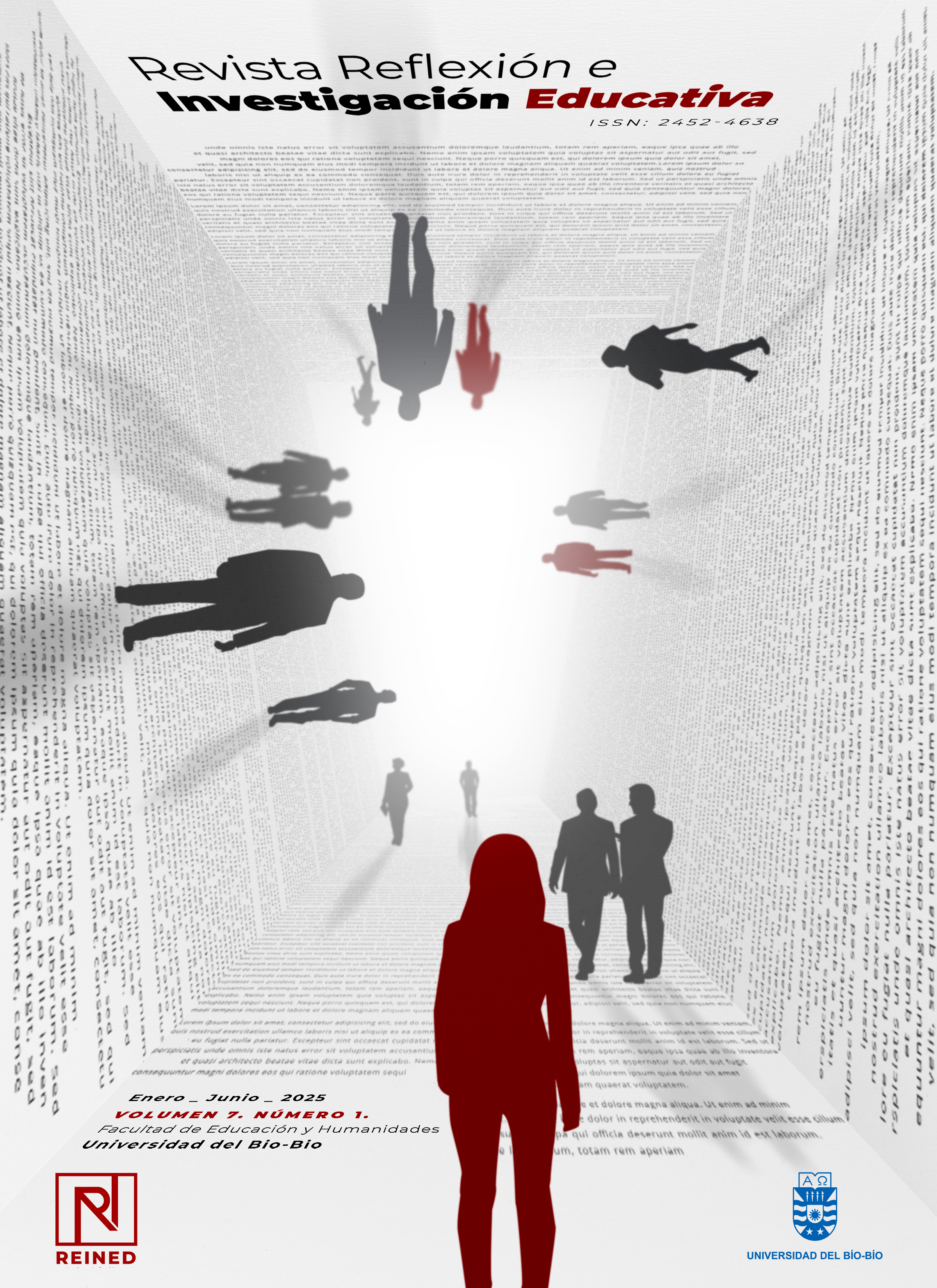RAZONES Y FORMAS DE UTILIZAR ACTIVIDADES GRUPALES EN LA EDUCACIÓN AMBIENTAL
Contenido principal del artículo
Resumen
A comienzos de este siglo, un grupo de educadores del Sudeste Asiático elaboró un libro de texto titulado “English via Environmental Education” para estudiantes universitarios en Indonesia, una economía emergente. Actualmente, teniendo en cuenta el importante papel del aprendizaje digital y la creciente crisis climática, el libro ha sido revisado y se ofrece gratuitamente en línea para fomentar su uso tanto en Indonesia como a nivel internacional. El presente artículo utiliza las actividades del libro como modelo para explicar por qué y cómo integrar la interacción entre estudiantes en la educación ambiental (EE). A pesar de los desafíos, incluidos las oportunidades de aprendizaje desiguales, la dependencia de los compañeros, las limitaciones de tiempo, las dificultades en la evaluación individual y las culturas académicas competitivas, el libro de texto demuestra que la cooperación, ya sea a pequeña o gran escala, marca una diferencia significativa. El artículo aboga por la implementación de actividades de aprendizaje cooperativo en la EE para empoderar a los estudiantes como agentes de cambio en la construcción de un mundo más sostenible y un futuro para todos.
Detalles del artículo
Citas
Abbott, G. (1989). Approaches to English teaching. In G. Abbott & P. Wingard (Eds.), The teaching of English as an international language: A practical guide. Collins.
Aronson, E., & Aronson, J. (2018). The social animal (12th ed.). Worth Publishers, Macmillan Learning.
Casta, J. S., & Hufana, E. R. (2016). Language functions in ESL textbooks. TESOL International Journal, 11(1), 65–80.
Farzaneh, N., & Nejadansari, D. (2014). Students’ attitude towards using cooperative learning for teaching reading comprehension. Theory and Practice in Language Studies, 4(2), 287–292. https://doi.org/10.4304/tpls.4.2.287-292 DOI: https://doi.org/10.4304/tpls.4.2.287-292
Galindo-Dominguez, H. (2021). Flipped classroom in the educational system. Educational Technology & Society, 24(3), 44–60. https://www.jstor.org/stable/27032855
Harari, Y. N. (2015). Sapiens: A brief history of humankind (J. Purcell & H. Watzman, Trans.). Vintage Books.
Haskell, D. G. (2012). The forest unseen: A year’s watch in nature. Viking.
Hsiung, C. (2012). The Effectiveness of Cooperative Learning. Journal of Engineering Education, 101(1), 119–137. https://doi.org/10.1002/j.2168-9830.2012.tb00044.x DOI: https://doi.org/10.1002/j.2168-9830.2012.tb00044.x
Johnson, D. W., & Johnson, R. T. (2009). An educational psychology success story: Social interdependence theory and cooperative learning. Educational Researcher, 38(5), 365–379. https://doi.org/10.3102/0013189X09339057 DOI: https://doi.org/10.3102/0013189X09339057
Keramati, M. R., & Gillies, R. M. (2021). Advantages and challenges of cooperative learning in two different cultures. Education Sciences, 12(1), 3. https://doi.org/10.3390/educsci12010003 DOI: https://doi.org/10.3390/educsci12010003
Kimmerer, R. W. (2013). Braiding sweetgrass: Indigenous wisdom, scientific knowledge and the teachings of plants. Milkweed Editions.
Krashen, S. D. (1989). The input hypothesis: Issues and implications (1st ed.). Longman.
Lie, A., Amy, S., Chau, M. H., & Jacobs, G. M. (Eds.). (in press). English via environmental education (2nd ed.). Peachey Publications.
Lim, S., Reidak, J., Chau, M. H., Zhu, C., Guo, Q., Brooks, T. A., Roe, J., & Jacobs, G. M. (2023). Cooperative learning and the sustainable development goals. Peachey Publications Ltd.
Long, M. H. (1981). Input, interaction, and second‐language acquisition. Annals of the New York Academy of Sciences, 379(1), 259–278. https://doi.org/10.1111/j.1749-6632.1981.tb42014.x DOI: https://doi.org/10.1111/j.1749-6632.1981.tb42014.x
Maslow, A., & Lewis, K. J. (1987). Maslow’s hierarchy of needs. Salenger Incorporated, 14(17), 987–990. https://www.researchgate.net/publication/383241976_Maslow's_Hierarchy_of_Needs
Maximino, C., & Soares, M. (2021). Cooperation in animals, and what it tells us about scientists. Science for the People Magazine, 24(3). https://magazine.scienceforthepeople.org/vol24-3-cooperation/cooperation-in-animals/
McCafferty, S. G., Jacobs, G. M., & DaSilva Iddings, A. C. (Eds.). (2006). Cooperative learning and second language teaching (1st ed.). Cambridge University Press.
Mendo-Lázaro, S., León-del-Barco, B., Felipe-Castaño, E., Polo-del-Río, M.-I., & Iglesias-Gallego, D. (2018). Cooperative team learning and the development of social skills in higher education: The variables involved. Frontiers in Psychology, 9, 1536. https://doi.org/10.3389/fpsyg.2018.01536 DOI: https://doi.org/10.3389/fpsyg.2018.01536
Ooi, S. X., & Cortina, K. S. (2023). Cooperative and competitive school climate: Their impact on sense of belonging across cultures. Frontiers in Education, 8, 1113996. https://doi.org/10.3389/feduc.2023.1113996 DOI: https://doi.org/10.3389/feduc.2023.1113996
Pappas, S. (2023, May 1). Do trees really support each other through a network of fungi? Scientific American. https://www.scientificamerican.com/article/do-trees-support-each-other-through-a-network-of-fungi/
Steffen, W., Grinevald, J., Crutzen, P., & McNeill, J. (2011). The anthropocene: Conceptual and historical perspectives. Philosophical Transactions of the Royal Society A: Mathematical, Physical and Engineering Sciences, 369(1938), 842–867. https://doi.org/10.1098/rsta.2010.0327 DOI: https://doi.org/10.1098/rsta.2010.0327
Vygotsky, L. S. (1978). Mind in society: Development of higher psychological processes (M. Cole, V. Jolm-Steiner, S. Scribner, & E. Souberman, Eds.). Harvard University Press. https://doi.org/10.2307/j.ctvjf9vz4 DOI: https://doi.org/10.2307/j.ctvjf9vz4
Webb, N. M., Franke, M. L., De, T., Chan, A. G., Freund, D., Shein, P., & Melkonian, D. K. (2009). ‘Explain to your partner’: Teachers’ instructional practices and students’ dialogue in small groups. Cambridge Journal of Education, 39(1), 49–70. https://doi.org/10.1080/03057640802701986 DOI: https://doi.org/10.1080/03057640802701986

